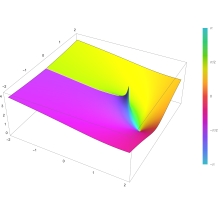
In mathematics, the logarithmic integral function or integral logarithm li(x) is a special function. It is relevant in problems of physics and has number theoretic significance. In particular, according to the prime number theorem, it is a very good approximation to the prime-counting function, which is defined as the number of prime numbers less than or equal to a given value
x
{\displaystyle x}
.
== Integral representation ==
The logarithmic integral has an integral representation defined for all positive real numbers x ≠ 1 by the definite integral...